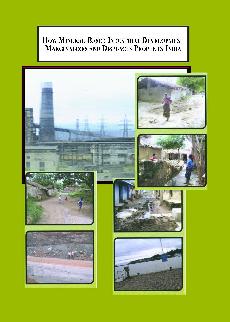HOW MINERAL BASED INDUSTRIAL DEVELOPMENT MARGINALIZES AND DISPLACES PEOPLE IN INDIA: Three Case Studies
We are currently unable to ship to the EU countries at this time. We apologize for this inconvenience.

| Author: | Meher, Rajkishor | |
| Year: | 2010 | |
| Pages: | 308 | |
| ISBN: | 0-7734-3784-3 978-0-7734-3784-5 | |
| Price: | $219.95 + shipping | |
| (Click the PayPal button to buy) | ||
Focuses on the three giant steel plants of India set up in the mineral rich tribal regions during the 1950s and 1960s. The study provides an account of the adverse consequences of displacement faced by the people and their ecosystem as a whole. It compares the three steel plants in terms of policy and implementation of the rehabilitation of the displacees from which useful lessons can be drawn for the future.
Reviews
“The study provides insights into not only the insensitivity of policymakers and implementers resulting in the persisting insecurity of the victims, but the process through which collective conscience of the victims is crystallizing leading to collective mobilization which equips them to interrogate the decision makers.” – Dr. T.K. Oommen
Emeritus Professor, Jawaharlal Nehru University
“This work offers the insight that displacement does not merely dispossess the oustees of their material resources or their economic opportunities. What displacement does is to rob them of the sense of security that comes from living in a community that gave meaning to their lives that is crucial to face the challenges they encounter in their daily life and overcome them. Because the oustees are cut off from their social world, they lose their self-confidence to access social networks and seek opportunities to improve their living conditions. Hence, Dr Meher is right in emphasising the importance of investing in human capital formation to ensure that the oustees are properly rehabilitated. This book also suggests that human capital formation is linked to the notion of social capital as well.” – Prof. M.N. Panini, Jawaharlal Nehru University
“ Closely following Cernea’s Resettlement and Rehabilitation Model, Dr Meher argues that landlessness caused by land acquisition and displacement is only one key aspect of the process of impoverishment. Aligned with landlessness are community disarticulation, marginalization, food insecurity, and homelessness. Dr Meher does not find much relevance or benefit in structural reforms that India has gone through in recent years in attempts to arrest impoverishment generated by development-induced displacement."– Jayantha Perera, Asian Development Bank
“This work offers the insight that displacement does not merely dispossess the oustees of their material resources or their economic opportunities. What displacement does is to rob them of the sense of security that comes from living in a community that gave meaning to their lives that is crucial to face the challenges they encounter in their daily life and overcome them. Because the oustees are cut off from their social world, they lose their self-confidence to access social networks and seek opportunities to improve their living conditions. Hence, Dr Meher is right in emphasising the importance of investing in human capital formation to ensure that the oustees are properly rehabilitated. This book also suggests that human capital formation is linked to the notion of social capital as well.” – Prof. M.N. Panini, Jawaharlal Nehru University
“ Closely following Cernea’s Resettlement and Rehabilitation Model, Dr Meher argues that landlessness caused by land acquisition and displacement is only one key aspect of the process of impoverishment. Aligned with landlessness are community disarticulation, marginalization, food insecurity, and homelessness. Dr Meher does not find much relevance or benefit in structural reforms that India has gone through in recent years in attempts to arrest impoverishment generated by development-induced displacement."– Jayantha Perera, Asian Development Bank
Table of Contents
List of Illustrations
List of Tables
Foreword
Preface
Acknowledgements
Introduction
1. Bhilai, Bokaro and Rourkela—Pre-Industrial Scenario
2. The Modern Steel Cities versus the State of Living of Displaced People
3. Development Scenario of the Periphery and the Resettlement Colonies
4. From Field to Factory and After? Impact of Mineral- based Industries on Ecosystem People
5. Mineral-Based Industries and the Involuntary Displacement Caused by Development
6. Protest and Resistance to Forced Displacement
Conclusion
Bibliography
Index
List of Tables
Foreword
Preface
Acknowledgements
Introduction
1. Bhilai, Bokaro and Rourkela—Pre-Industrial Scenario
2. The Modern Steel Cities versus the State of Living of Displaced People
3. Development Scenario of the Periphery and the Resettlement Colonies
4. From Field to Factory and After? Impact of Mineral- based Industries on Ecosystem People
5. Mineral-Based Industries and the Involuntary Displacement Caused by Development
6. Protest and Resistance to Forced Displacement
Conclusion
Bibliography
Index
